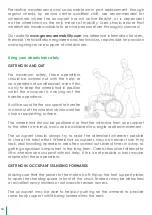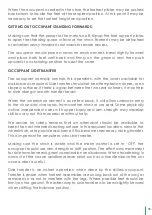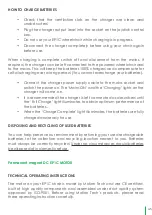
Care should be taken when transferring with a cushion in position. It is possible
the occupant may slip down into the cushion during a transfer. Additional
effort may be required to reach the required seating position. Some active
occupants may be able to do this by pressing down on the armrests to gain
leverage. For less active users, carers may be required to assist in transfers to
ensure that the occupant is correctly seated and supported by the backrest
of the wheelchair.
Cushions may be adapted with an additional Velcro strip if this has been
assessed as necessary. Pressure relieving cushions are often thicker than
comfort cushions.
If after a period of use a different specification or a gel type cushion is fitted
this may effect stability and overall weight. If the occupant feels unstable
because seating position with a different cushion is higher, there may be a
need to review chair configuration, to revise the occupant centre of gravity.
If a cushion is supplied to a wheelchair, the footrest height will have been
set to provide the correct support including an allowance for the cushion
thickness. If the occupant uses the chair set up in this way without a cushion,
localised pressure on the body contact in the seating area will be increased.
This could cause discomfort leading to skin damage. Different footrests can
be supplied to suit different height positions.
Users and carers should check the cushion periodically. The Greencare
cushion cover has a zip at the rear under side edge this allows access to the
internal cushion components for service checks.
If the cushion cover becomes soiled it can be removed for washing. Normal
washing temperature of 60degrees centigrade is normally adequate for
domestic cleaning, but decontamination and cleaning at 80 degrees
centigrade and above may be necessary in a hospital environment. Cleaning
agents containing phenol or alcohol should not be used. Do not tumble dry
cushion covers. Ensure the cover is fully dry before using again.
The support effectiveness of a cushion changes over a period of use. As a
general guide, cushions will need replacement every two years. If the cushion
becomes damaged or loses its support and feels to bottom out, it should be
brought to the attention of the wheelchair service, as a replacement may be
required.
39












































